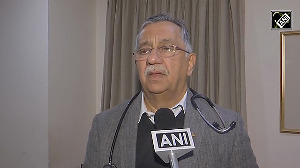Despite every effort from global airlines to cut capacity, reduce flights, watch every penny and come up with ingenious ways to raise ancillary revenues, close to 26 airlines went under or suspended operations in the course of the year. As the chief of IATA Giovanni Bisignani aptly put it: The industry is in intensive care, with total global losses for the year pegged at $5 billion.
The month of November brought further gloom to an already grim picture. International passenger traffic fell by 4.5 per cent and international cargo by a steep 13.5 per cent, the sharpest fall since 9/11. International capacity dropped by 1 per cent.
The November international passenger load factors stood at 72, a decline of approximately 3 percentage points over the same month last year.
In India, the carnage was complete. Almost all the carriers registered jaw-dropping losses (barring, apparently, Paramount whose numbers are not public so we can only take their word for it).
The larger airlines like Kingfisher and Jet were on their knees begging banks for loans and the government for a more lenient tax regime. In their hour of need, the two rivals even joined hands an alliance which doesn't seem to have really gone anywhere despite rampant speculation that it would result in a merger.
The low-fare breed of carriers all but disappeared. Though the airlines continued to call themselves low-fare or low-cost carriers (LCCs), low fares for all practical purposes became a thing of the past (even as this column was being written, Indian announced year-end cuts in fares, but how real and sustained they are remains to be seen).
Fares yo-yoed from very high to pretty high through the year but at no point did the passenger feel he was seeing the good old lows of 2006. Bad news continued to pile up as air traffic dropped and so did the number of people flying on each aircraft.
Yields of airlines were somewhat higher due to the higher fares but what was gained in yields was lost in loads. Although airlines in India have been losing money since Air Deccan launched and changed the rules of the game, as far as airline chiefs in India are concerned, they truly couldnt wait to see the back of 2008.
So, can we say Thank God it's 2009? If one goes by IATA's prediction, the pain should be halved in this year (global losses are projected at $2.5 billion for the year, down from $5 billion in 2008).
However, this relief is region-specific as it is only North American carriers that are expected to show a slight gain. It is carriers here that were the hardest hit by the oil price rise with very limited hedging for which they will pay heavily by posting the largest industry losses for 2008 at $3.9 billion.
However, the same lack of hedging is allowing these airlines to take full advantage of the lower spot prices now and will help them post a small profit of $300 million in 2009.
But the expectations for India and the Asia Pacific fail to bring the much-awaited cheer associated with a new year. If IATA's predictions are anything to go by, Asia-Pacific carriers are expected to see losses more than double from the $500 million in 2008 to $1.1 billion in 2009! The situation is expected to worsen with a drop in global cargo on account of the global recession.
The domestic Indian scenario isn't looking too bright either. Yes, fares may drop temporarily but taxes and surcharges remain high, taking away the joy of lower basic fares.
Passengers, some of whom may have reconciled themselves to trains, may continue with that option with earnings expectations in 2009 remaining low. Unrelated events may take a toll on loads.
According to IATA, India's carriers, which are already struggling with high taxes and insufficient infrastructure, can expect a drop in demand following on from the tragic terror incidents in November.
So, here's my take on what we need to see from the government, the airlines and other stakeholders for 2009, if we don't want to see a longer parking line at the graveyard for airlines in the Mojave desert in California.
The collective groans of the industry have galvanised the government into some action to alter a skewed tax regime, a process that must reach its logical conclusion. If that happens, the aviation industry loses its favourite whipping boy and can no longer blame all its ills on the governments policies.
Then, the airlines will be forced to tighten their own seatbelts, be paranoid about cutting costs (more than one aviation expert has pointed out that in the present environment, you wont be flying long if your costs are high) and be more realistic with their expansions and hiring.
As for passengers, let's just keep our fingers crossed that better sense prevails before some of the good of the last two or three years comes undone.
Fewer airlines means less choice available those who remember the era when one was at the mercy of the state-run carriers, don't want to land there again.
Click here to search for lowest airfares!






 © 2025 Rediff.com -
© 2025 Rediff.com -